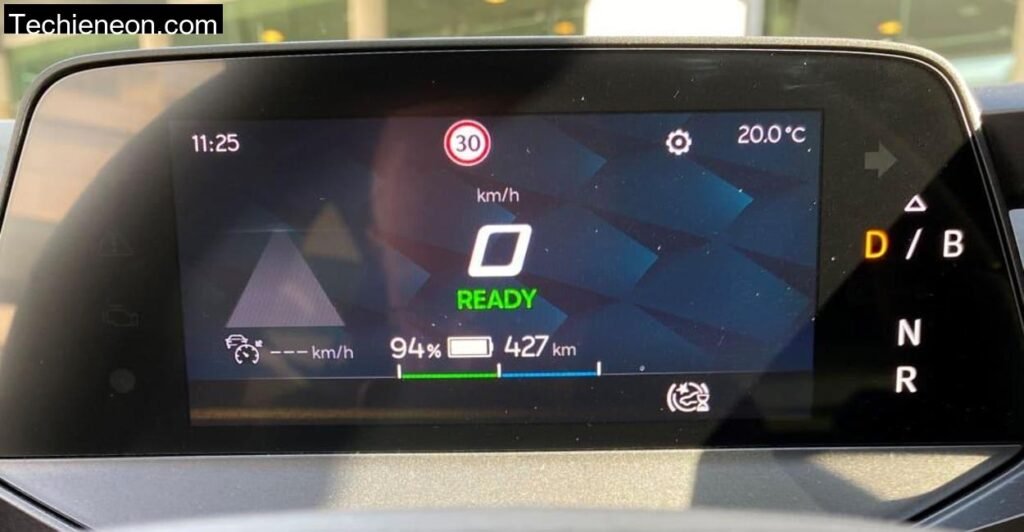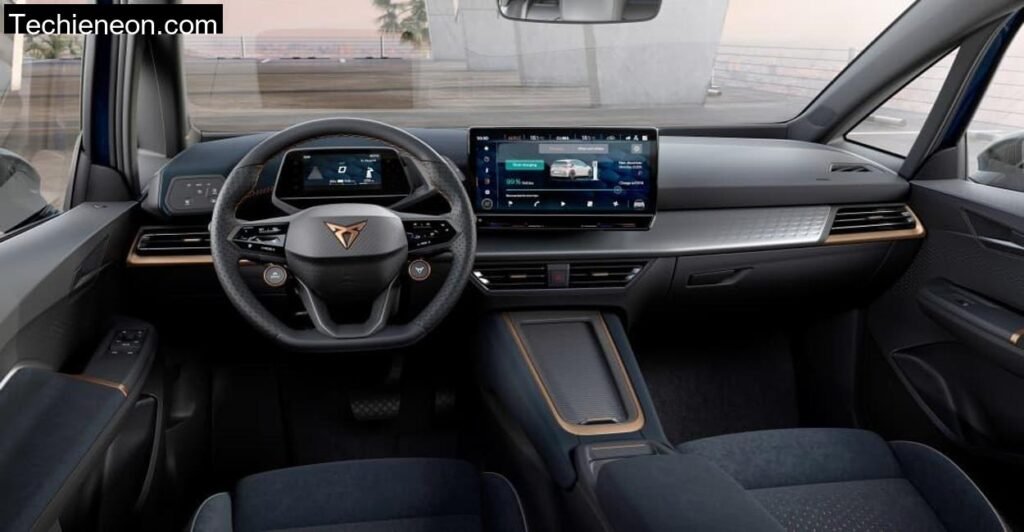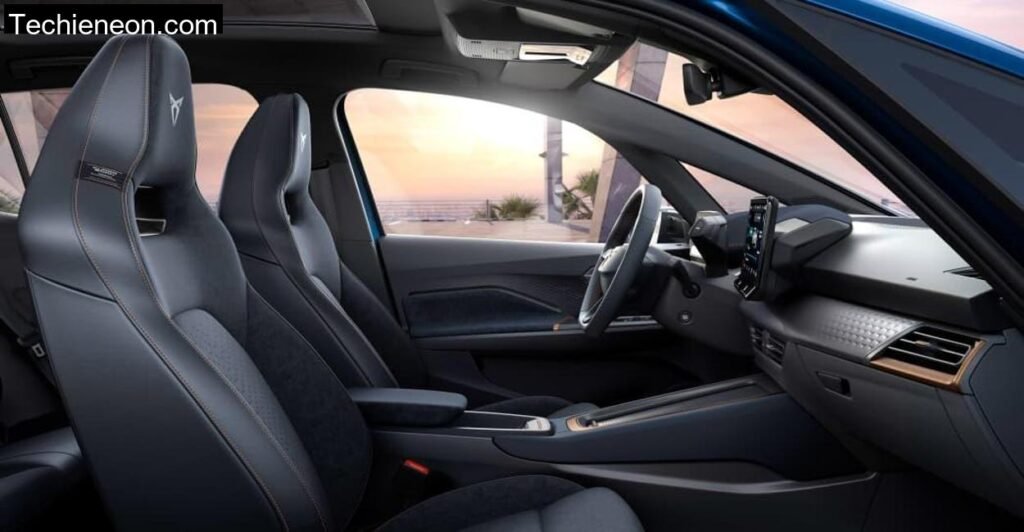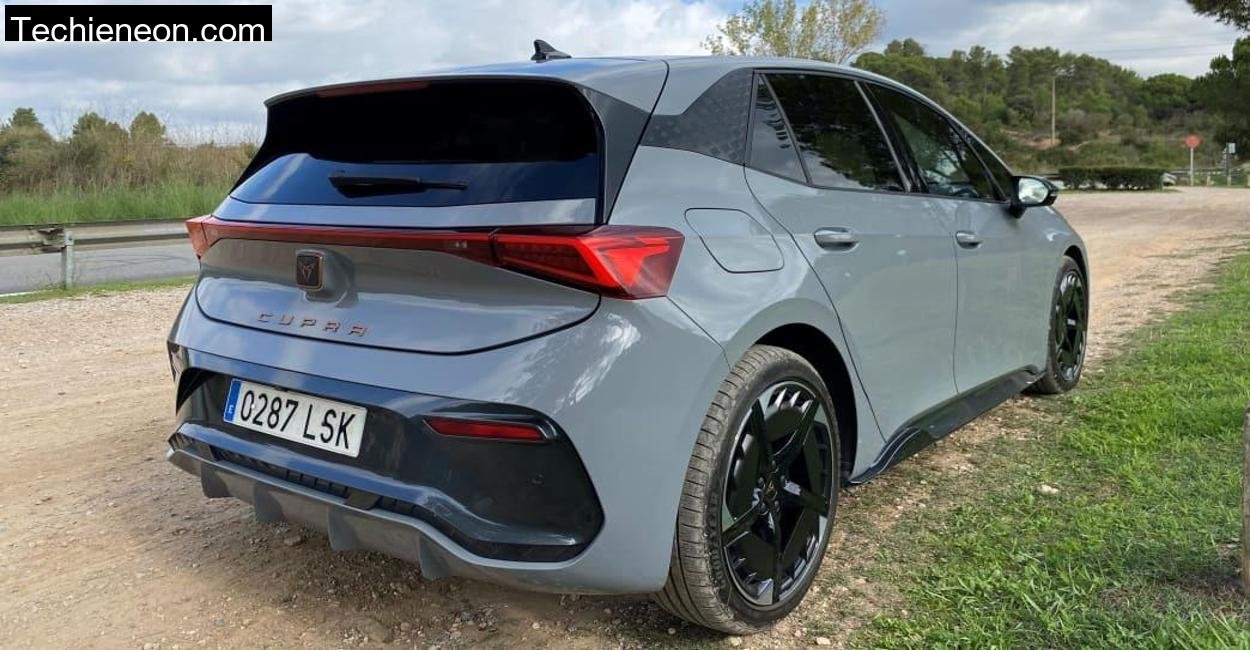Test Cupra Born: 295 km range

The Cupra Born I tested came with the 58 kWh battery and the 170 kW (231 hp) electric motor. It doesn’t sound wildly powerful on paper, but on the narrow, rising asphalt of the Nordhelle, it immediately felt alive. Power delivery is clean and linear, with none of the sluggishness some EVs can suffer from at higher altitudes or under heavy load.
In real-world terms, the Born achieved a range of 295 km during my mixed-use test. That included mountain climbs, fast country roads, and a brief Autobahn stretch where I gave it the full pedal. Cupra claims up to 425 km WLTP, and if you treat the throttle gently and stay under 120 km/h, you can definitely creep up toward 350 km. But drive it like it begs to be driven, and you’ll land in the mid-200s.
The Ecotest reported a test consumption of 21.2 kWh per 100 km, including charging losses. That lines up well with what I experienced, it’s efficient enough for daily use but not groundbreaking. This isn’t the sort of EV you buy just to save money at the plug. It’s about how it makes you feel on the road.
Cupra Born: DC charging up to 135 kW
Charging is one of the Born’s stronger points. The official DC fast-charging limit is 120 kW, but under the right conditions, it measured a real 135 kW, good news for road-trippers. At a high-speed charger, you can go from 10 to 80 percent in 34 minutes.
Back home or at work, a typical 11 kW wallbox will fill the battery from empty to full in about five and a half hours. On a 7.2 kW setup, expect around nine hours. The system’s charging curve is intelligently managed, dropping speed gracefully rather than dramatically after the 80% mark.
Does the Cupra Born just look faster?

You could be forgiven for thinking the Born is all show and little go. After all, its cousin, the VW ID.3, isn’t exactly a Nürburgring contender. But the Cupra delivers. With rear-wheel drive and a low center of gravity, it dives into corners with a confidence that took me by surprise.
Adaptive dampers were fitted to my test car, and they were the unsung heroes of the drive. On smooth tarmac, they stiffen to keep the body flat and precise. When the road crumbled into patchy bits near the summit, the suspension softened just enough to keep everything calm inside the cabin.
Cupra claims 0 to 100 km/h in 6.6 seconds, and the Born delivers on that promise. Even better is the mid-range punch: 60 to 100 km/h takes just 3.6 seconds, which made overtaking lumbering vans on mountain roads almost too easy. From 15 to 30 km/h, it jumps in just 0.8 seconds, that’s go-kart quick
Sportier at the touch of a button
A pair of steering wheel buttons lets you toggle driving modes without fishing through menus. The right-side button drops you straight into full-fat Sport mode, while the left cycles you through Normal, Range, and Individual.
In Sport, everything tightens. Throttle response sharpens, the steering firms up, and the Born begins to feel like something more than an eco-conscious commuter. It’s still quiet, of course, but you sense the change in attitude. On the Nordhelle’s climbing esses, this mode gave me the best connection to the road, it’s where the Born feels most alive.
Balanced suspension comfort
Despite the aggressive styling and big 20-inch wheels, the Born doesn’t punish you on rough roads. Adaptive dampers make a big difference, filtering out small imperfections while still giving the chassis enough stiffness for high-speed composure.
On smooth stretches near Herscheid, it glided. On rougher, narrower lanes through the forested sections of the Nordhelle, it stayed composed. There’s enough give in the suspension to make long trips relaxing, but not so much that it feels floaty or vague.
There is plenty of space in the Cupra Born

One of the pleasant surprises was just how roomy the Born feels. I’m six-foot-three (1.91 meters), and I had ample leg and headroom both in the front and rear. Even taller friends commented on the surprisingly generous rear seating.
The trunk isn’t massive at 385 liters, but it’s well-shaped and useable. Drop the rear seats and you’ll unlock over 1200 liters, which came in handy when I had to haul camera gear and hiking equipment. No frunk, no towing capability, and no roof load allowed, though, worth noting if you’re the adventurous type.
Conclusion
The Cupra Born isn’t just a more stylish ID.3,it’s a genuinely entertaining electric hatchback. The range is usable, the charging speeds are modern, and the handling strikes a rare balance between comfort and engagement. It’s not a cheap car, but you do feel like you’re getting something with personality.
On the Nordhelle, it handled itself with real confidence. It was quick when I wanted it to be, calm when I needed it to be, and always responsive. If you want an EV that feels fun without screaming for attention, the Born is worth a very close look.


Leave a Comment